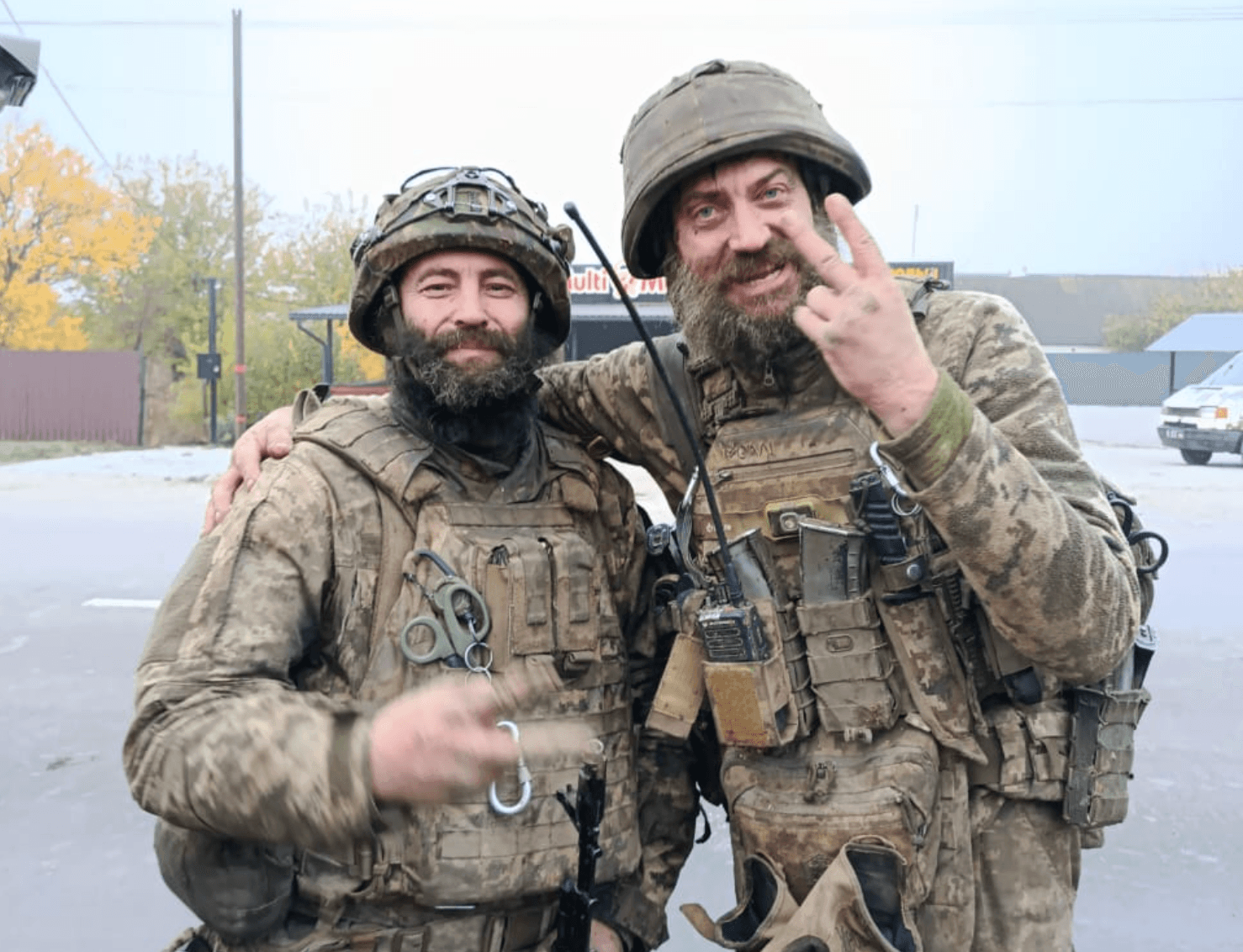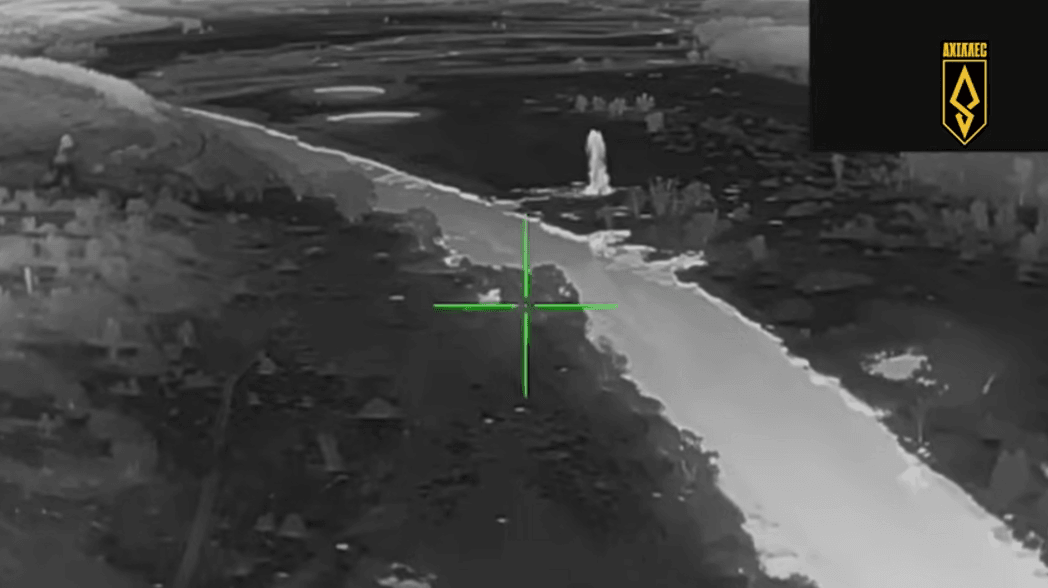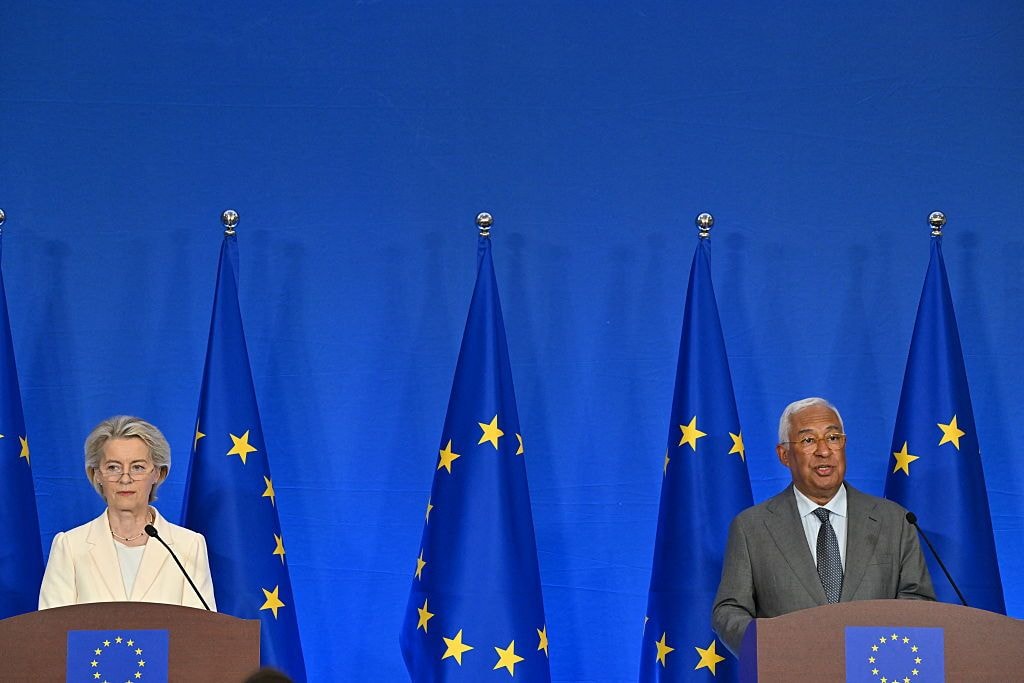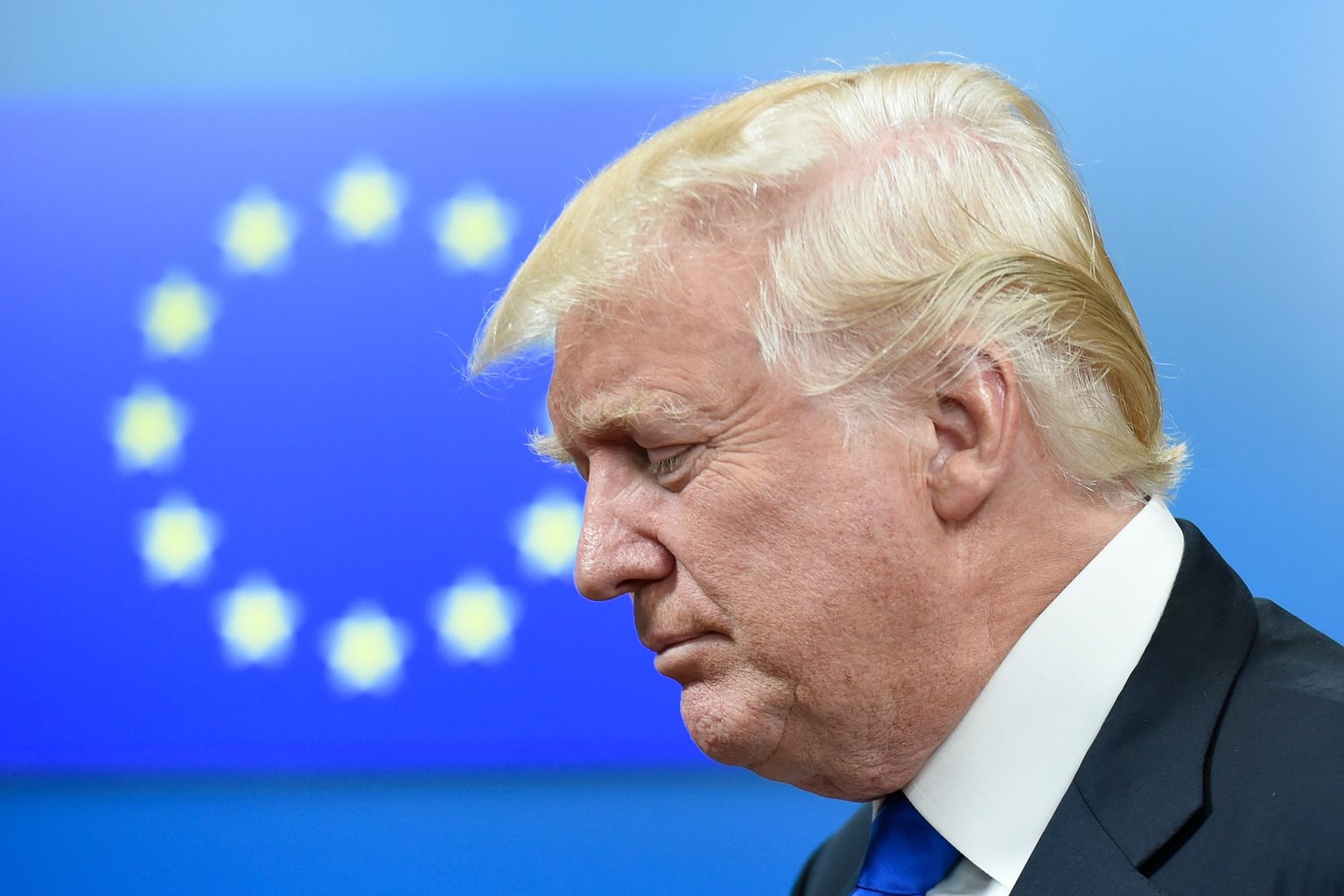Ukraine war latest: Ukraine strikes targets in Russia, including gunpowder plant

Key developments on June 11:
- Ukrainian drones strike targets in Russia, including gunpowder plant, General Staff says
- Zelensky urges 'stronger' EU sanctions on Russia, lower oil price cap
- Ukraine repatriates bodies of 1,212 fallen soldiers
- Ukraine's SBU releases fresh video of Operation Spiderweb, teases 'new surprises'
- NATO summit statement omits Ukraine's entry bid, $40 billion pledge, Bloomberg reports
Ukrainian drones struck multiple military targets in Russia, including the Tambov Gunpowder Plant, overnight on June 11, the General Staff of Ukraine's Armed Forces reported.
The plant, one of Russia's main manufacturers of gunpowder and explosives for small arms, artillery, and rocket systems, caught fire following the drone strike, according to the General Staff.
Local residents reported hearing explosions and shared videos showing a large blaze near the facility, according to the Russian independent media outlet Astra.
The General Staff described the attack as part of a broader operation to degrade Russia's ability to produce explosive materials and ammunition used in the full-scale war against Ukraine.
The Tambov facility has been targeted several times since November 2023, and U.S. sanctions were imposed on it that same year. Tambov Oblast, located southeast of Moscow, lies hundreds of kilometers from Ukraine and shares no direct border with it.
Russian state news agency TASS confirmed a drone attack but did not mention the strike on the powder plant. Tambov Oblast Governor Maxim Egorov said that emergency services had extinguished the fire and that there were no casualties, though he did not specify the location of the fire.
In addition to the strike on Tambov, Ukrainian drones hit the ammunition depot of Russia's 106th Airborne Division in Kursk Oblast and the depot at Buturlinovka airfield in Voronezh Oblast, the General Staff said.
The extent of the damage is still being assessed, the General Staff said.
"The Defense Forces continue to take all measures to undermine the military and economic potential of the Russian occupiers and force Russia to stop its armed aggression against Ukraine," the statement reads.
Ukraine has ramped up long-range drone strikes in recent weeks, targeting Russian air bases and arms production facilities in an effort to disrupt Moscow's war machine ahead of an anticipated Russian summer offensive.
Zelensky urges 'stronger' EU sanctions on Russia, lower oil price cap
President Volodymyr Zelensky on June 11 called on the European Union to impose tougher sanctions against Russia, arguing that stronger financial pressure is necessary to curb Moscow's war effort.
Speaking at the Ukraine-Southeast Europe Summit in Odesa, Zelensky said the upcoming 18th EU sanctions package "could be stronger," especially in targeting Russian oil tankers and the financial sector. He urged the EU to further reduce the price cap on Russian oil exports.
"A ceiling of $45 per barrel of oil is better than $60, that's clear, that's true. But real peace will come with a ceiling of $30," he said. "That's the level that will really change the mindset in Moscow."
After the 17th package of sanctions against Russia took effect on May 20, Ukraine's allies announced the following day that another round of restrictions was already in the works.
European Commission President Ursula von der Leyen announced on June 10 that the EU is considering lowering the oil price cap from $60 to $45 per barrel — a measure that will be discussed at the upcoming G7 summit in Canada on June 15–17.
The Kremlin's budget is increasingly strained by soaring military expenditures, with Russia's Finance Ministry relying heavily on energy revenues to fund the war against Ukraine.
The push for tighter sanctions comes as Russia continues to reject ceasefire proposals and presses forward with military operations. Zelensky warned that Odesa remains one of Russia's "main targets," with plans to push beyond it toward the borders with Romania and Moldova.
"Russia wants to destroy it, as it has done with countless cities and villages in the occupied territories," he said. "Russian military plans point to this region — Odesa — and then to the border with Moldova and Romania."
Odesa is a major port city in southern Ukraine, located on the northwestern coast of the Black Sea. The president warned of possible destabilization efforts in the broader region, comparing the Kremlin's strategy to its previous interference in the Balkans.
"We saw this before in the Balkans, where Russia intensified interethnic friction, carried out sabotage, and even attempted coups," Zelensky said.
The Odesa summit was attended by several southeastern European leaders, including Serbian President Aleksandar Vucic and Romania's newly elected President Nicusor Dan.
Vucic's trip marked his first official visit to Ukraine since the start of Russia's full-scale invasion.
Ukraine repatriates bodies of 1,212 fallen soldiers
Ukraine has brought back the bodies of 1,212 fallen service members, the Ukrainian Coordination Headquarters for the Treatment of Prisoners of War (POW) said on June 11.
The announcement follows Russian-Ukrainian Istanbul talks on June 2, which focused on exchanges of POWs and fallen soldiers.
The repatriation was carried out through a coordinated effort involving the Security Service of Ukraine (SBU), the Armed Forces, the Interior Ministry, the Ombudsman's Office, the State Emergency Service, and other national security and defense institutions. The International Committee of the Red Cross also supported the operation.
The remains of soldiers were returned from multiple front-line regions, including Kharkiv, Donetsk, Luhansk, Zaporizhzhia, Kherson, and Sumy oblasts.
Officials emphasized that investigative and forensic teams from the Interior Ministry and the Health Ministry are working to identify the bodies in the shortest possible time.
Vladimir Medinsky, aide to Russian President Vladimir Putin, claimed Russia transferred the bodies of 1,212 Ukrainian soldiers in accordance with the agreements in Istanbul, while Ukraine released the remains of 27 Russian service members.
The Ukrainian side did not disclose how many Russian bodies were handed over in return.
At the Istanbul meeting on June 2, Russian and Ukrainian delegations agreed on a new exchange of POWs but failed to reach a ceasefire agreement.
The Turkey-hosted talks were the second round since mid-May and resulted in an agreement to exchange severely wounded and young prisoners, with President Volodymyr Zelensky saying up to 1,200 individuals could be returned on each side. Russia also pledged to transfer up to 6,000 bodies of Ukrainian soldiers.
Following the Istanbul talks, Ukraine and Russia have already conducted two prisoner exchanges on June 9 and 10. While exact figures were not immediately disclosed, Ukraine confirmed the return of severely wounded and chronically ill prisoners, including those captured during the 2022 siege of Mariupol and held for more than three years.
In Istanbul, Ukraine also submitted a peace proposal that called for a full ceasefire, an "all-for-all" POW exchange, the return of abducted children, and the use of frozen Russian assets to rebuild Ukraine. Russia has yet to formally respond.
Ukraine's SBU releases fresh video of Operation Spiderweb, teases 'new surprises'
The Security Service of Ukraine (SBU) released on June 11 a new video detailing the sequence of its mass drone strike against Russia's strategic aviation earlier this month.
The Operation Spiderweb, carried out on June 1, involved 117 drones that were hidden in trucks across Russia and deployed against four air bases, some thousands of kilometers from the Ukrainian border.
The strike deep in the rear damaged 41 aircraft, including Tu-95, Tu-22M3, and Tu-160 bombers, rare A-50 spy planes, and An-12 and Il-78 transport aircraft, causing damage of over $7 billion, the SBU said.
Trucks, seen in the footage driving in an undisclosed location, first transported first-person-view (FPV) drones and wooden cabins to Russia, the SBU said. Already on Russian territory, the vehicles were loaded with cabins, which, in turn, carried the drones.
The preparations were taking place in the Russian city of Chelyabinsk, not far from a Federal Security Service (FSB) office, according to the SBU.
The loaded trucks then drove to multiple locations in the cities of Ivanovo, Ryazan, and in the Murmansk, Irkutsk, and Amur oblasts. The cabins opened remotely at the time of the attack, allowing the drones to strike Russian planes at the Belaya, Olenya, Dyagilevo, and Ivanovo air bases.
The operation was also meant to strike at the Russian air base in Ukrainka in Amur Oblast, but this part of the attack failed.
In the strike, Ukraine deployed drones specially designed by SBU specialists for attacks deep in the rear. Their unique features allowed them to be remotely controlled in real time thousands of kilometers behind the border, an SBU source told the Kyiv Independent.

The drones' design also helped them "bypass Russian defenses and effectively strike the strategic aviation," the source said.
SBU chief Vasyl Maliuk, who personally oversaw the operation, stressed that Ukrainian drones targeted "absolutely legitimate targets – military airfields and aircraft that attack our peaceful cities."
"The SBU is hitting and will hit (Russia) where it considers itself unreachable!" Maliuk said in a statement.
"We are working on new surprises, no less painful than the Operation Spiderweb."
The attack was lauded by Ukrainian leaders and Western partners, with NATO Admiral Pierre Vandier calling it a reinvention of "the Trojan Horse" method with "technical and industrial creativity."
Various satellite imagery released after the attack showed around a dozen destroyed planes. NATO estimates that between 10 and 13 Russian planes were completely destroyed, and more were damaged.
In turn, President Volodymyr Zelensky claimed that roughly half of the 41 targeted planes have been damaged beyond repair. Russia acknowledged damage to its aircraft but claimed all of them will be "restored."
NATO summit statement omits Ukraine's entry bid, $40 billion pledge, Bloomberg reports
A one-page draft of a joint declaration for the upcoming NATO summit omits Ukraine's membership aspirations and last year's pledge of over $40 billion in support, Bloomberg reported on June 11 after reviewing the draft.
This news signals that, for the first time since 2022, Russia's war against Ukraine will not be the chief focus of the annual NATO meeting, which is taking place on June 24-25 in The Hague.
The unusually brief document recognizes Russia as a threat to NATO but not as an aggressor in Ukraine. It also does not mention China, Bloomberg reported.
The communique of the 2024 summit in Washington named Beijing as a "decisive enabler" of Russia's war against Ukraine. Last year's gathering also included a declaration that Ukraine's path to NATO is "irreversible" and promised more than $40 billion in additional military aid.
This year, the document will solely focus on defense spending, as U.S. President Donald Trump pushes NATO partners to hike the military expenditure benchmark from 2% to 5% of GDP.
The final version of the statement can still change, Bloomberg reported.
The brevity of the communique and the summit itself, as well as the decreased focus on Ukraine, stems from the effort to avoid conflict between Trump and European allies.
In a sharp break from former U.S. President Joe Biden, the Trump administration has not approved any new military aid packages to Ukraine and signaled its intent to reduce assistance for Kyiv in the next year's budget.
The U.S. president initially vowed to broker a peace deal between Kyiv and Moscow but became increasingly less engaged in the process as the negotiations stalled and Russia only intensified its attacks against Ukraine.
According to Bloomberg, NATO allies will pledge to allocate at least 3.5% of GDP to defense needs and 1.5% to protecting infrastructure and civil preparedness by 2032. Member states will also consider counting their contributions to Ukraine as part of the new defense spending targets, the news outlet reported.
The summit was preceded by rumors that President Volodymyr Zelensky would not be invited to participate for the first time due to U.S. opposition.
Later, the speculations were dispelled after the Dutch media reported that NATO Secretary General Mark Rutte had invited the Ukrainian leader to attend.
Note from the author:
Ukraine War Latest is put together by the Kyiv Independent news desk team, who keep you informed 24 hours a day, seven days a week. If you value our work and want to ensure we have the resources to continue, join the Kyiv Independent community.













